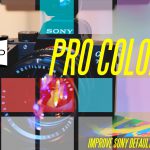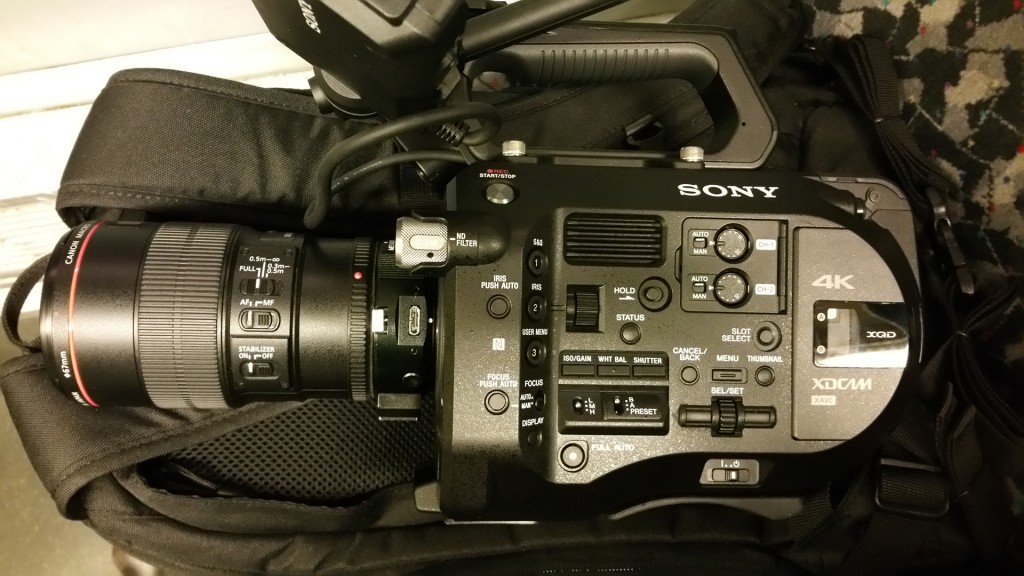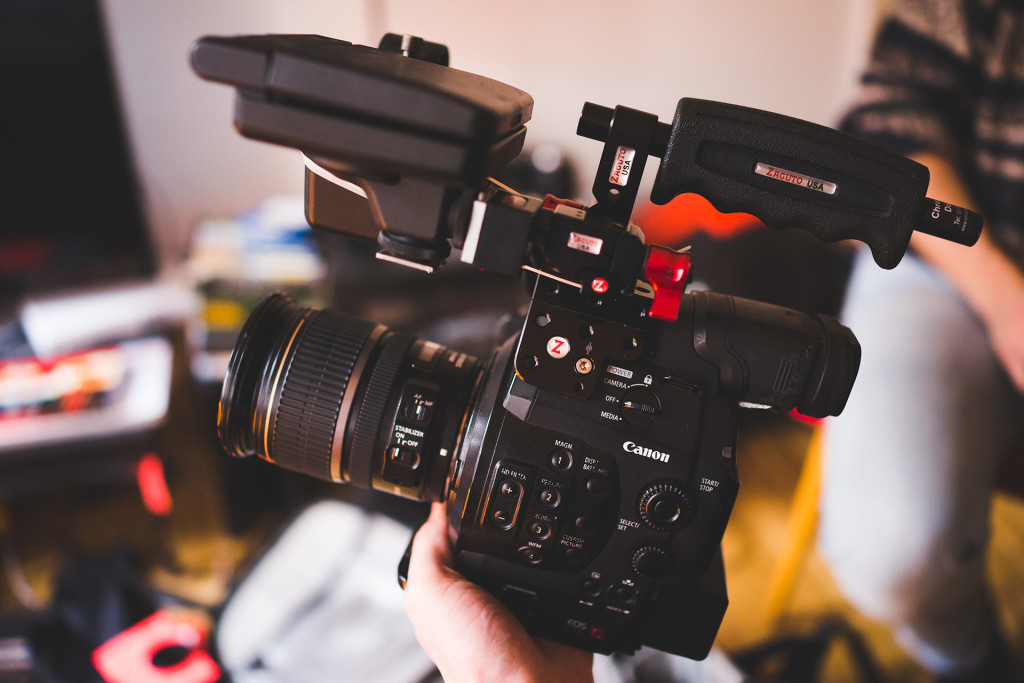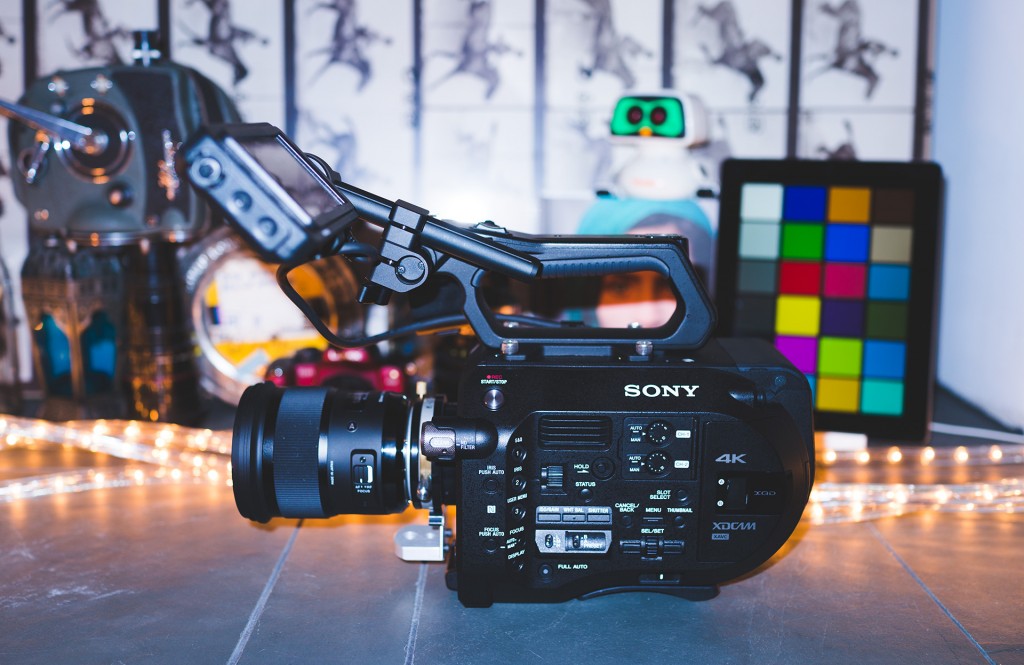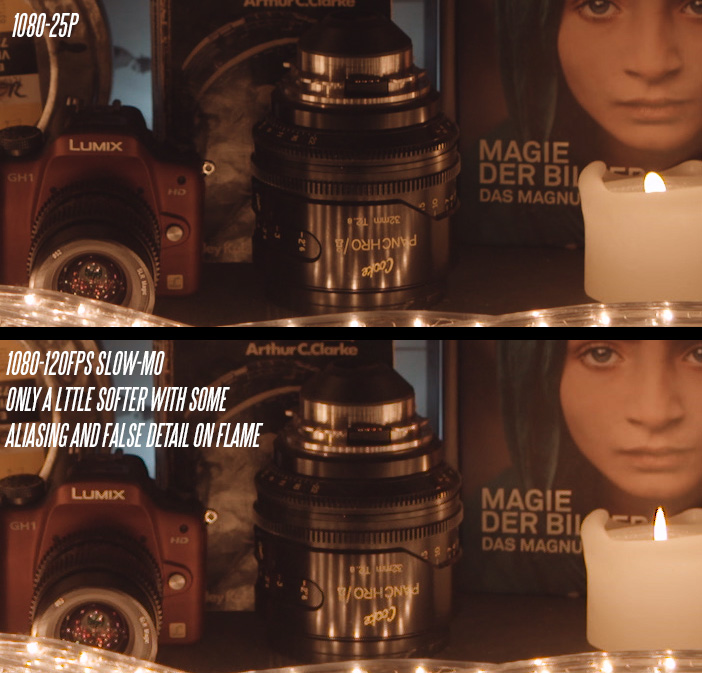Ferrari have a DNA. Cinema cameras have a DNA. You have to go back decades to see it evolve into the force it is today. For Ferrari it is the very specific engine sound and the looks. Arri are that spirit to cinema cameras. The DNA of the Sony FS7 is a compromise. Half EX1 and half cinema camera, the ergonomics of the buttons, dials and menus need a complete overhaul in my opinion. So Sony haven’t got it all right yet but what they have done is put a Ferrari engine inside. The FS7 for £5199+VAT is an absolute bargain, with an ‘engine’ almost on par with a £18,000 F55 (though without global shutter). It’s a much more capable camera than the Canon C300 or Panasonic GH4.
Prologue
I didn’t buy the FS7 nor is it on loan from Sony. It was on loan from my good friend Frank Sauer. This review is written for the benefit of my readers rather than for the benefit of the manufacturer.
It’s tricky at the moment to find a tone in my EOSHD reviews that is brutally honest enough to be of use critically but not too blunt that it upsets the many fine people working at the camera manufacturers. The problem is, over the years I have started to meet a few and offer feedback in private. I can now see first hand why so much of criticism online of camera gear is vague and watered down to protect that relationship. It’s a huge problem. “Why would you be vague?” – those words came from Steve Jobs at Apple in a conversation with Jony Ive who had seen first hand what Jobs’s merciless criticism (some would call it abuse) did to his colleagues, leaving some of them crushed and dispirited. Jobs’s argument is the one I subscribe to – that ambiguity was a form of selfishness, putting the selfish desire to be popular or to be liked ahead of the product.
Unfortunately for Sony, Panasonic and the rest I’m going to be stinging and not vague. I’m going to be rude about certain aspects of the product that I think are wrong. Arri have a very strong group of top professional filmmakers and DPs advising them and they are very apt at processing and filtering this feedback, since they’ve been doing for so long. With all of the Japanese camera manufacturers I think their system of feedback is flawed. A grey shade of consensus from a committee of people concerned about protecting their relationship with the manufacturer. I think perhaps the clearest flaw from looking at this camera is that vital negative criticism was given to Sony too passively.
I’d say the menu system on the FS7 is dog shit. Complete and utter dog shit.
And when I say that, I remember that even the softly spoken polite Jony Ive realised Jobs’s was right, recalling in a recent New Yorker interview – “In this deep desire to be liked, you’ve compromised giving clear, unambiguous feedback”.
*****
Can the Sony FS7 topple the Canon C300 as the most rented pro video camera in the UK?
This has to be the goal for this camera.
Power is one thing but there’s satisfaction in taming the beast. That’s the power, the spec of the camera, combined with the ability to direct that power as nimbly as possible and in a way that’s emotionally satisfying. This is the secret formula that gives a filmmaker the ability to really connect with the camera, so they can flourish creatively with it. They should not have to fight it, they shouldn’t have to fiddle or be distracted as you would by a computer. The Canon C300 got this right and that is why it is the most rented pro camera in the UK.
I really wish Sony would learn this. With the FS7 they have got a lot closer, but it’s still a camera designed with two conflicting mindsets. The control panel is designed for XD-CAM camcorder users like Alister Chapman. The rest of the camera is designed for cinematographers. It is the latter group who are now most important on the market, because if you look at the top 5 most rented cameras in the UK in 2014, not a single one had a fixed lens – Canon C300, Arri Alexa, Sony F55, Arri Amira, Epic.
The design of the control panel is the FS7’s biggest downfall and the only reason anyone would have for not buying it. With my Canon 1D C I have very responsive, direct button and dial placements that wrap around under one hand, whilst the other hand is on the lens to focus. Also the menus, I can get to what I want within 2 seconds and rarely more than 2 or 3 button presses. I’m going to return to the ergonomics of this camera in a later post. It’s just too much for one sitting. Just bare in mind that it’s a much better camera ergonomically than the FS100 or FS700!
There are positives to the FS7 design, and almost all of them copy the C300. The top handle, the screen mounted on rails and powered by the camera, the jutting bow of the front of the camera under the lens mount, the added handgrip and the compact (in cinema camera terms) batteries. I also like the nod to S35 film cameras with the rounded back, and the padded shoulder base built into the camera. However some of the detachable parts which should be attached by ratcheting bolts are actually screwed on, which can be a major inconvenience. Overall though this is as complete and as flexible a camera as you can get without rigging it up, and the built in ND filter dial is also much improved from terrible FS700 implementation.
Image quality (slow-mo)
In this part of the review I will focus on the slow-mo up to 180fps in 1080p, with the 4K material (and shootout with the Canon 1D C & Samsung NX1) coming later.
You can download the original 1080p footage from the FS7 here on Vimeo if you’re a member.
The codec choices are interesting on this camera. I found XAVC-L much more practical for shooting slow-mo. The file sizes in XAVC-I are enormous for 1080p and since it is conformed in-camera you end up with a LOT of data and 2 minute long clips from a few seconds of shooting. The I option of XAVC is an ALL-I codec at bitrates exceeding 200Mbit in both 1080p and 4K.
Go to the long-GOP codec XAVC-L and you get much longer recording times and I didn’t notice any loss in quality for 1080p. The 35Mbit or 50Mbit in XAVC-L isn’t spread as thinly as the 200Mbit or 350Mbit/s in XAVC-I, which compresses every frame individually. This codec is smoother to edit on a laptop but XAVC-L in 1080p was fine on my MacBook as well. 4K might be a different matter, I’ll come to that in the next article.
I was shooting in Berlin so 50hz lighting on the streets. So I had the camera in PAL and the max frame rate for slow-mo is 150fps. In NTSC you can go up to 180fps. Personally I found the sweet spot was 120fps. 180fps was just too slow for what I was shooting. The camera has a flicker reduction mode for 50hz and 60hz lights but it didn’t have an impact on the slow-mo material, due to the high shutter speeds you need for this which mainly cause the flicker. I shot 360 degree shutter (1/240 for 120fps) as it was very dark and ISO hovered around 8000 in S-LOG 3. I also shot half the footage at 150fps to produce more flicker, which I used for artistic reasons. Quite liked the pulsing of light!
For daylight shooting in slow-mo on the FS7 I’ll refer you to Philip Bloom with this rather lovely trailer for The Wonder List. As you can see the quality is pretty damned good.
The Sony FS700 was very popular for slow-mo work, but the FS7 is better. Canon really need to get these higher frame rates on their C300 Mark II at NAB.
The camera has a ‘Full scan’ mode which bins to get you higher than 72fps. 4K goes to 60p. There’s a drop in image quality in the binning mode for 120fps, 150fps, 180fps of course – some aliasing and moire but it’s a significant step up from the Panasonic GH4’s 96fps 1080p, the Sony A7S 120fps 720p and the Samsung NX1’s 120fps 1080p. It’s only a little softer than the 24/25p 1080p mode and only a little more false detail.
You maintain your Super 35mm field of view.
At ISO 2000, the native sensitivity the camera is just so clean, it’s a great low light performer though it can’t quite top the 1D C at the top ISO 12,500 in S-LOG 3 for low-noise and isn’t as clean either as the A7S, it’s very impressive.
So for the first time I could shoot at very dramatic high frame rates in such dark, drab winter light in Berlin on the streets.
In my next piece on the FS7 we’ll look at 4K, S-LOG 3 and dynamic range. This is where the camera really stuns me for the image you are getting for £5k!

